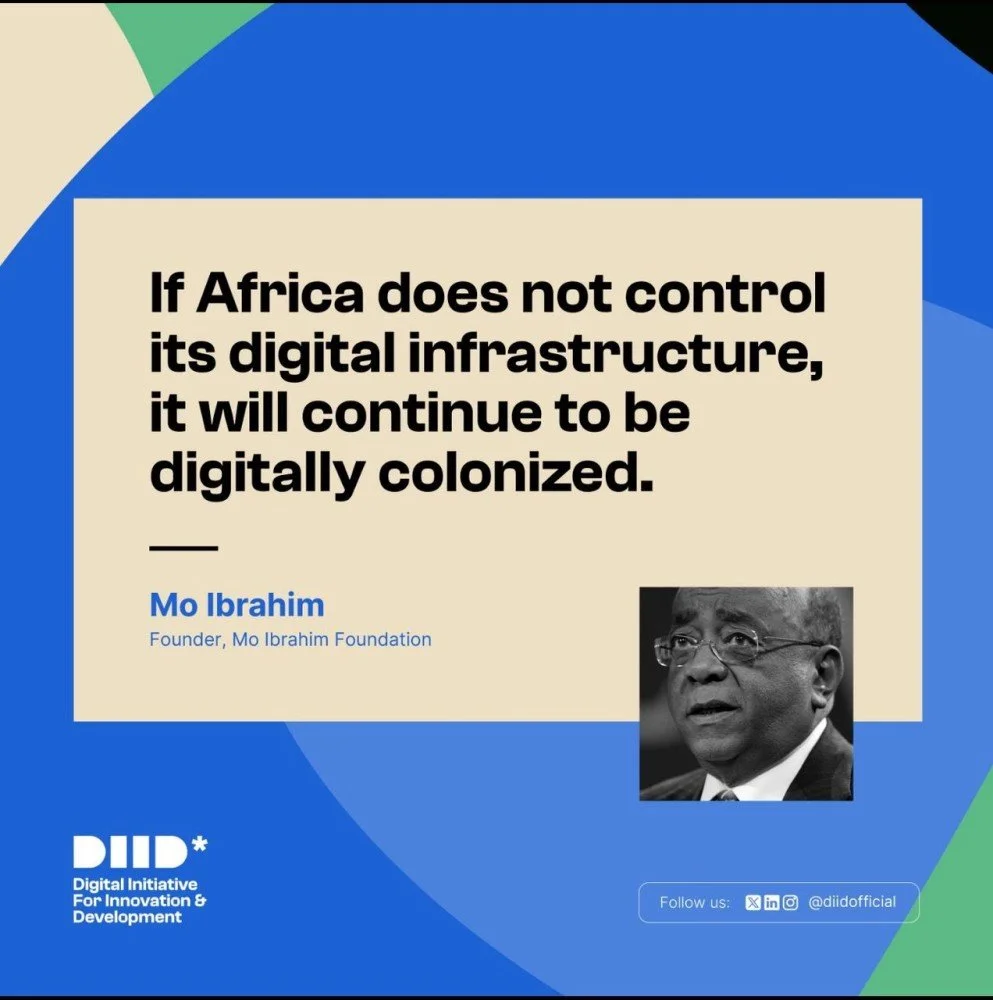The New Scramble for Africa: Digital Empires, Tech Sovereignty, and the Role of India, Estonia, GovStack, Brazil, and Other Digital Powers
By Robert Karanja, Senior Director - Africa, Co-Develop
"Who controls the past controls the future. Who controls the present controls the past." George Orwell, 1984
A Digital Berlin Moment: Africa at the Crossroads of Global Tech Power
In 1884, colonial powers gathered at the Berlin Conference to divide the African continent without African consent. Today, we are witnessing a new kind of scramble: one not for physical territory but for digital dominance. Africa’s vast population, untapped data resources, and growing digital infrastructure make it the focal point of a 21st-century geopolitical struggle among emerging and established digital powers: India, China, the United States, the European Union, Estonia, Brazil, and new initiatives like GovStack.
This is an active contest over who will shape the digital rules, platforms, and standards that underpin identity, finance, governance, and innovation across the continent. Africa, unlike in 1884, is no longer a passive subject. But whether it becomes an empowered architect or a fragmented battleground depends on the choices made now.
The Rise of Digital Empires and Competing Visions
India: The South-South Digital Architect
India offers an alternative model of digital development through its India Stack, MOSIP, UPI and several other DPI (Digital Public Infrastructure) exports. Unlike Western corporate-led or Chinese state-led systems, India’s open-source, government-backed model emphasizes interoperability, scalability, and public good design.
Countries like Togo, Morocco, Ethiopia, Sierra Leone, and Ghana are already adopting elements of India’s approach, including biometric ID systems, real-time payments, and digital document storage. India's diplomacy focuses on technology as a tool for inclusion and sovereignty.
Estonia: The e-Governance Pioneer
Estonia is a small country with outsized influence in digital governance. Its X-Road architecture, digital ID, and e-residency systems are being looked at as models for agile, transparent government services. Through several partnerships with African governments and support from EU development agencies, Estonia promotes lightweight, secure e-government frameworks that can be adapted to Africa’s context.
GovStack: Modular Governance as Infrastructure
GovStack, a collaborative initiative between Germany, Estonia, the ITU, and the Digital Impact Alliance (DIAL), aims to provide modular, open-source building blocks for digital public services. Its ambition is to accelerate DPI deployment across low- and middle-income countries, including many in Africa. GovStack promotes common standards and avoids vendor lock-in, aligning with the AU’s vision of integrated digital transformation.
Brazil: A Latin Voice in Digital Sovereignty
Brazil’s role is growing through its own digital ID system (Cadastro Base do Cidadão), leadership in digital rights debates, and participation in South-South tech partnerships. Brazil emphasizes democratic control over data and is increasingly engaged in UN and BRICS discussions shaping digital norms that matter for Africa.
China and the U.S.: Competing for Control
China continues to invest in Africa’s digital infrastructure through companies like Huawei and ZTE, offering fast deployment but often with closed systems and surveillance risks. The U.S. pushes for a private-sector-first model, led by tech giants like Google, Meta, and Amazon, promoting free markets but sometimes undermining sovereignty through monopolistic practices. US Corporates such as Visa and MasterCard are also actively workign to reshape the payments landscape across Africa with very aggressive PPP arrangements with Governments across the continent (See my previous article on the future of PPP – Visa & Fayda)
Africa’s Role: Prize, Player, or Platform Builder?
Unlike in 1884, African countries today have choices and leverage. The African Union’s Digital Transformation Strategy, Smart Africa Alliance, and regional bodies like ECOWAS and SADC are pushing for continental digital sovereignty. Yet power asymmetries persist. Africa’s bargaining power depends on:
Creating a shared vision for DPI across the continent
Investing in homegrown tech capacity and open-source communities
Negotiating from a position of unity, not fragmentation
Key Opportunities for Africa today
Digital Sovereignty
The rise of open-source DPI frameworks offers Africa the ability to own its data, platforms, and infrastructure, rather than lease it from foreign powers.
South-South Knowledge Transfer
Partnerships with India, Brazil, and Estonia enable peer learning without the baggage of colonialism. These relationships can support African developers, civil servants, and policymakers in building systems that are relevant, sustainable, and sovereign.
Continental Interoperability
Through AU-led efforts and standards like those promoted by GovStack, Africa has the chance to develop interoperable systems for ID, payments, health, and education that function across borders, enhancing trade and mobility.
Innovation and Jobs
By fostering local ecosystems built on public APIs, open data, and shared codebases, Africa can drive youth employment, startups, and inclusive growth.
Strategic Risks and Challenges
Digital Neo-Colonialism
If Africa does not assert control, today’s scramble could replicate colonial patterns through new forms of data extractivism, platform dependency, and surveillance authoritarianism.
Fragmentation and Incompatibility
Competing standards and systems from different external partners may create digital silos that undermine continental integration. Without coordination, Africa may be digitally balkanized.
Capacity Gaps
Open-source tools are not free to deploy or maintain. Africa must invest in digital literacy, developer training, and sustainable funding models to avoid dependency.
Governance and Trust Deficits
DPI must be accompanied by robust data protection laws, digital rights safeguards, and transparent governance. Without this, trust in digital systems may erode.
Strategic Priorities for a Digital Pan-African Future
Design a Continental DPI Blueprint Leverage India Stack, MOSIP, and GovStack as starting points. The emphasis is on the key idea “starting points” Localize and harmonize systems through AU and RECs.
Invest in Digital Sovereignty and Capacity Establish African tech fellowships, open-source hubs, and cloud infrastructure. Fund research and innovation through public-private partnerships.
Forge Equitable South-South Alliances Deepen cooperation with India, Brazil, Estonia, and GovStack (as required) Co-create standards, governance models, and shared digital commons.
Establish Robust Governance and Accountability Pass and enforce data protection, cybersecurity, and open API laws. Set up multi-stakeholder DPI oversight bodies including civil society.
Mo Ibrahim - Founder, Mo Ibrahim Foundation
Conclusion: Africa’s Digital Destiny Must Be African-Led
The new scramble for Africa is real, but so is the opportunity for digital liberation. The actors have changed—from colonial empires to tech powers—but the stakes remain the same: control, sovereignty, and self-determination.
Africa must not merely choose between India, China, the U.S., or Europe. It must define its own path by leveraging strategic alliances, building indigenous capacity, and asserting its right to shape the digital rules of tomorrow.
The future belongs not to those who bring the tech, but to those who build, govern, and own it.


